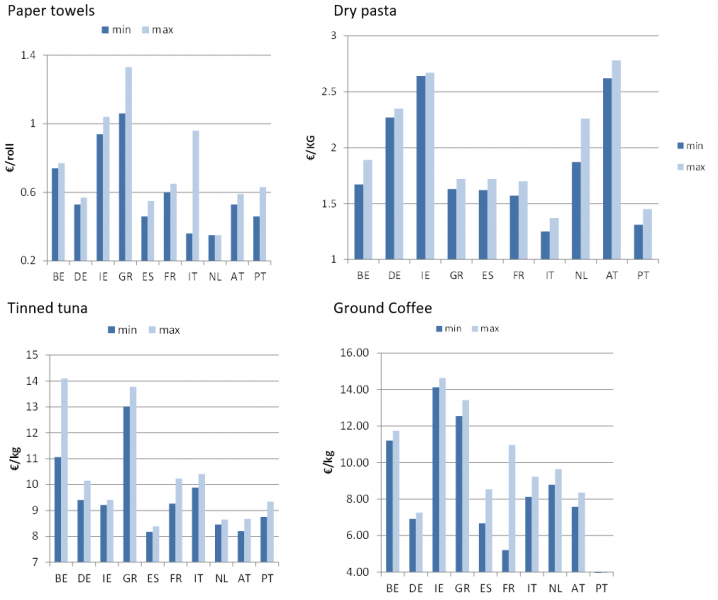References
Anderson, James E and van Wincoop, Eric, “Trade costs”, Journal of economic literature, 2004, 42(3), pp. 691-751.
Berlingierim G, Breinlich H., Dhingra S. “The Impact of Trade Agreements on Consumer Welfare—Evidence from the EU Common External Trade Policy”, Journal of the European Economic Association, 2018, 16(6), pp. 1881–1928.
Engel Charles & John H. Rogers. “European product market integration after the euro,” Economic Policy, 2004, 19(39), pp. 347-384.
Goldberg Koujianou Pinelopi & Frank Verboven. “Cross-country price dispersion in the euro era: a case study of the European car market”, Economic Policy, 2004, 19(40), pp. 483-521.
Haskel, Jonathan and Holger Wolf, “The Law of One Price: A Case Study”, Scandinavian Journal of Economics, 2001, 103(4), pp. 545-458.
Isard, Peter, “How Far Can We Push the Law of One Price?” American Economic Review, 1977, 67(5), pp. 942-948.
Lach, Saul. “Existence and Persistence of Price Dispersion: An Empirical Analysis.” The Review of Economics and Statistics, 2002, 84(3), pp. 433-444.
Reif Adam and Fabio Rumler. “Within- and Cross-Country Price Dispersion in the Euro Area.”, ECB Working paper series, 2014, No. 1742






